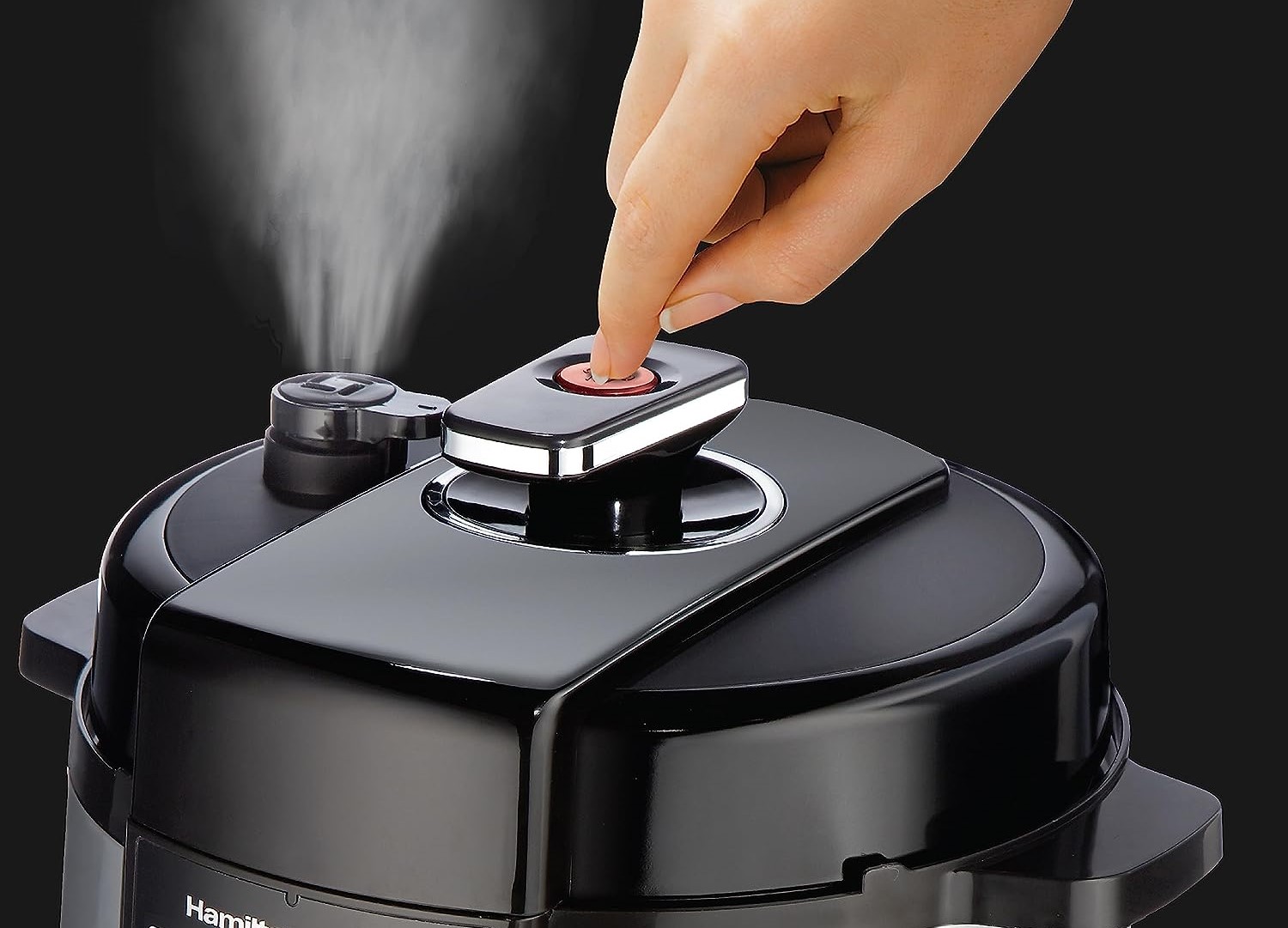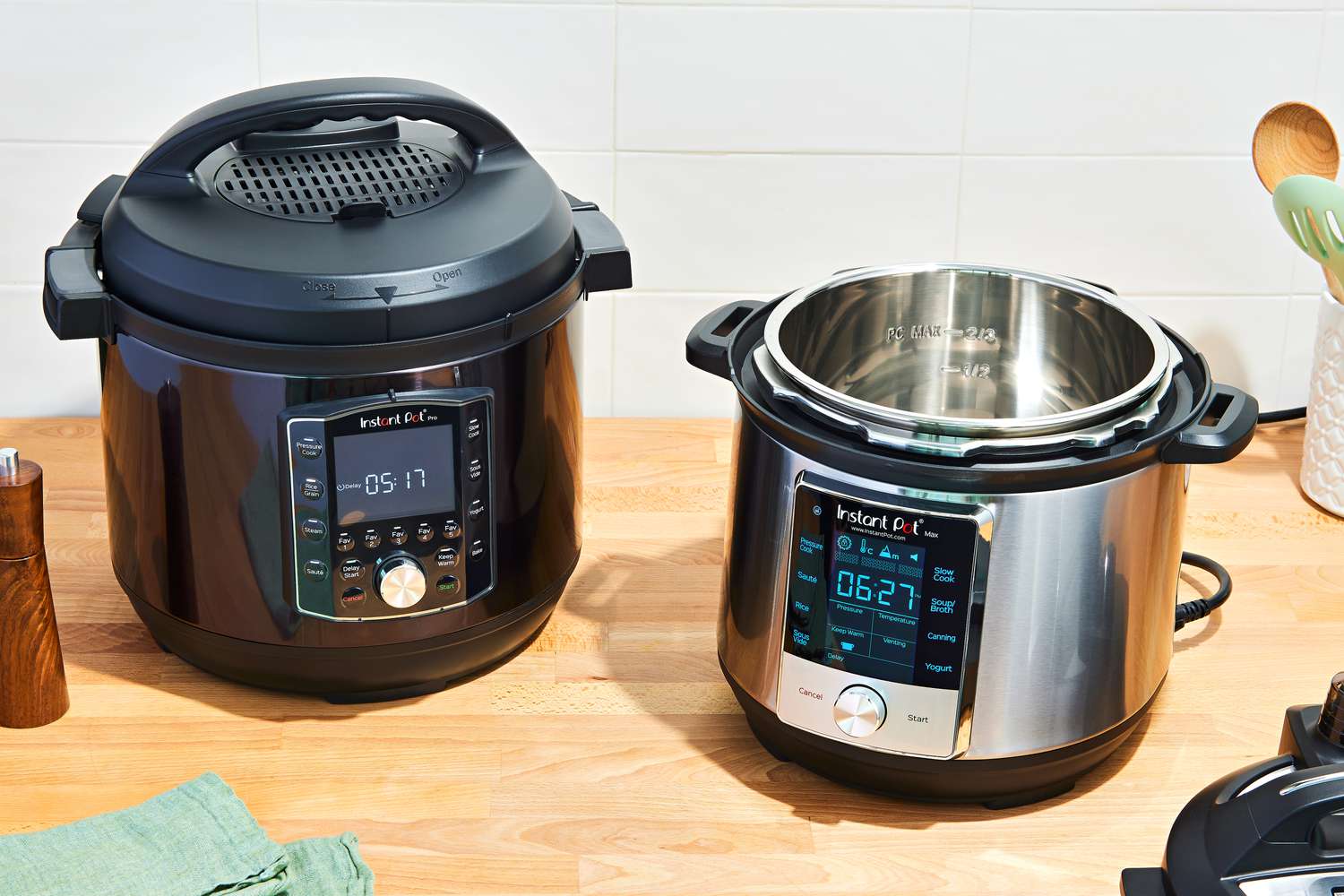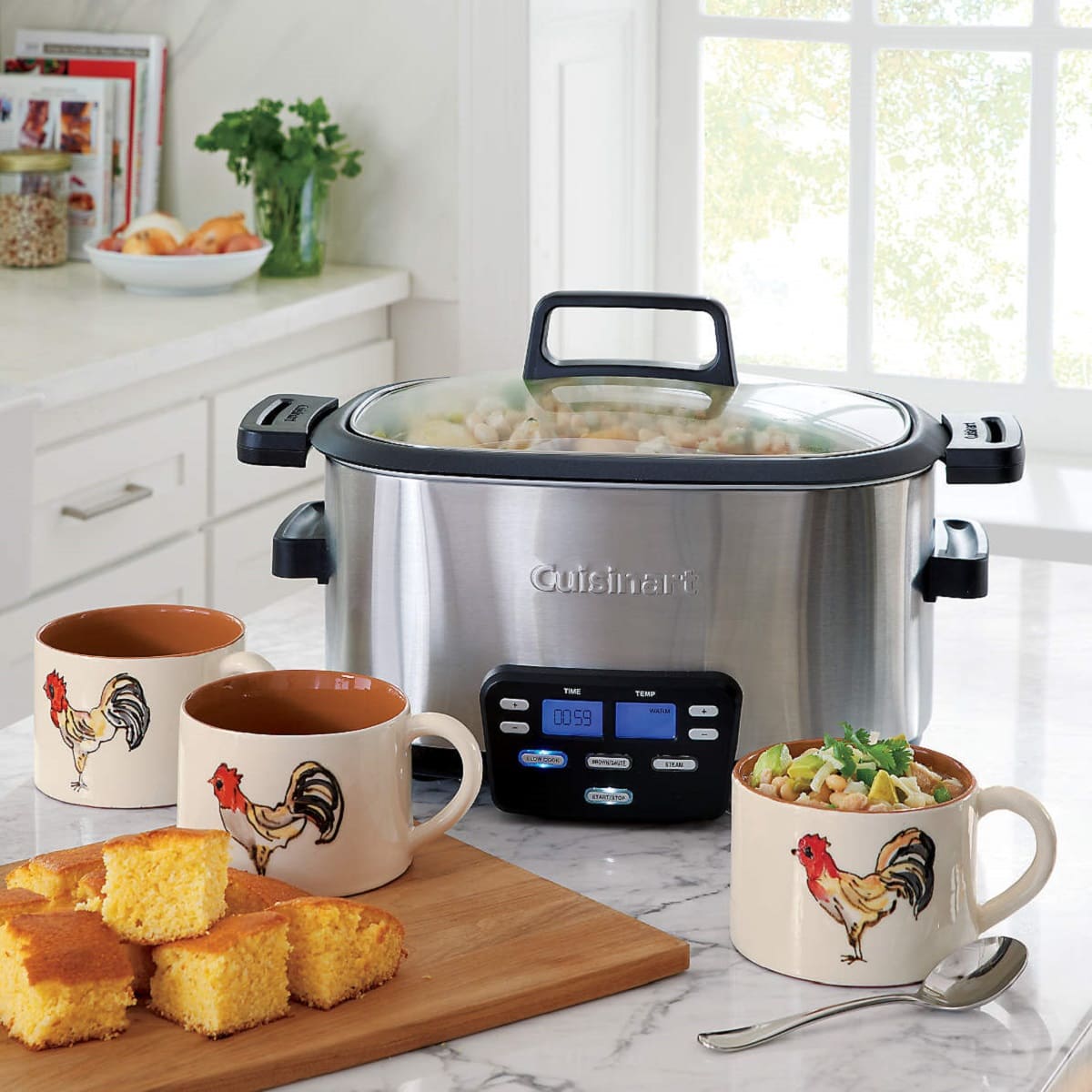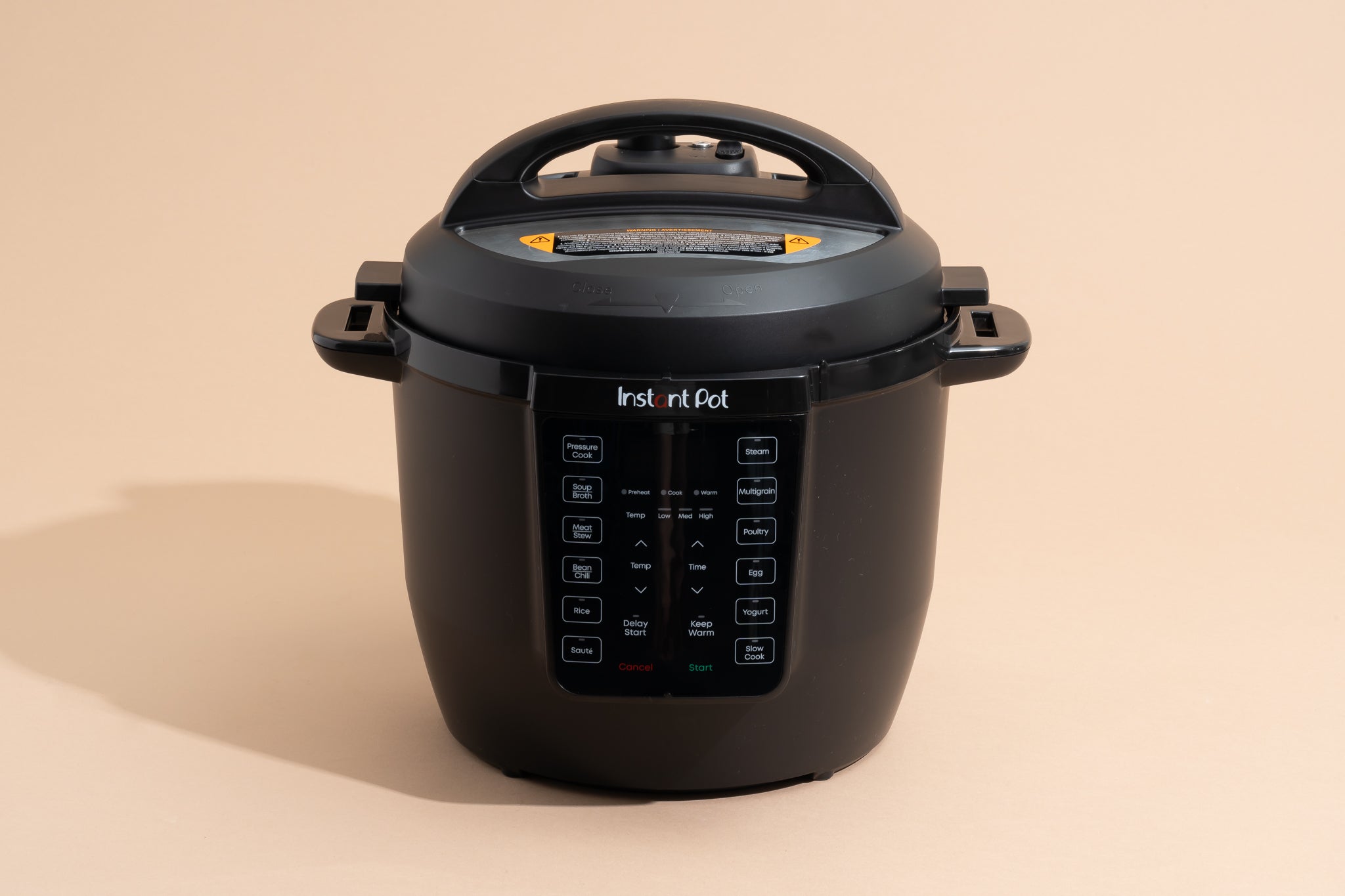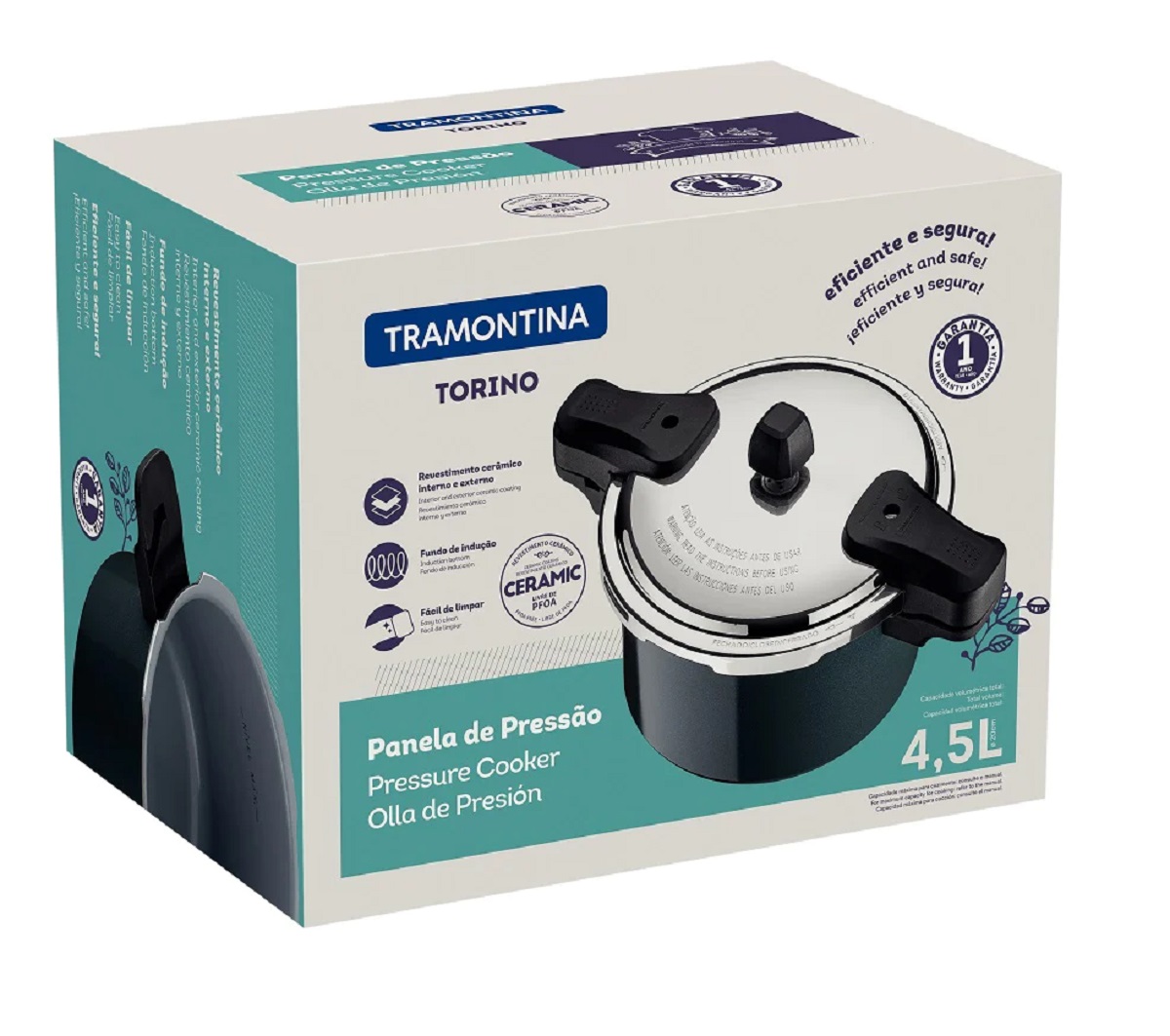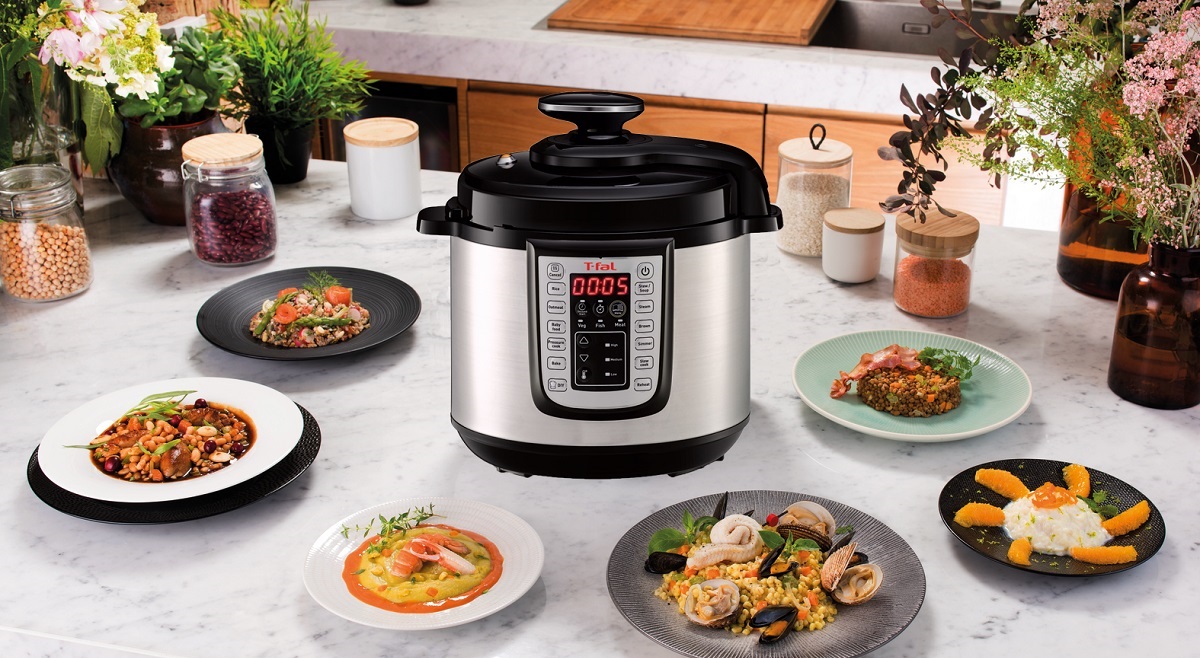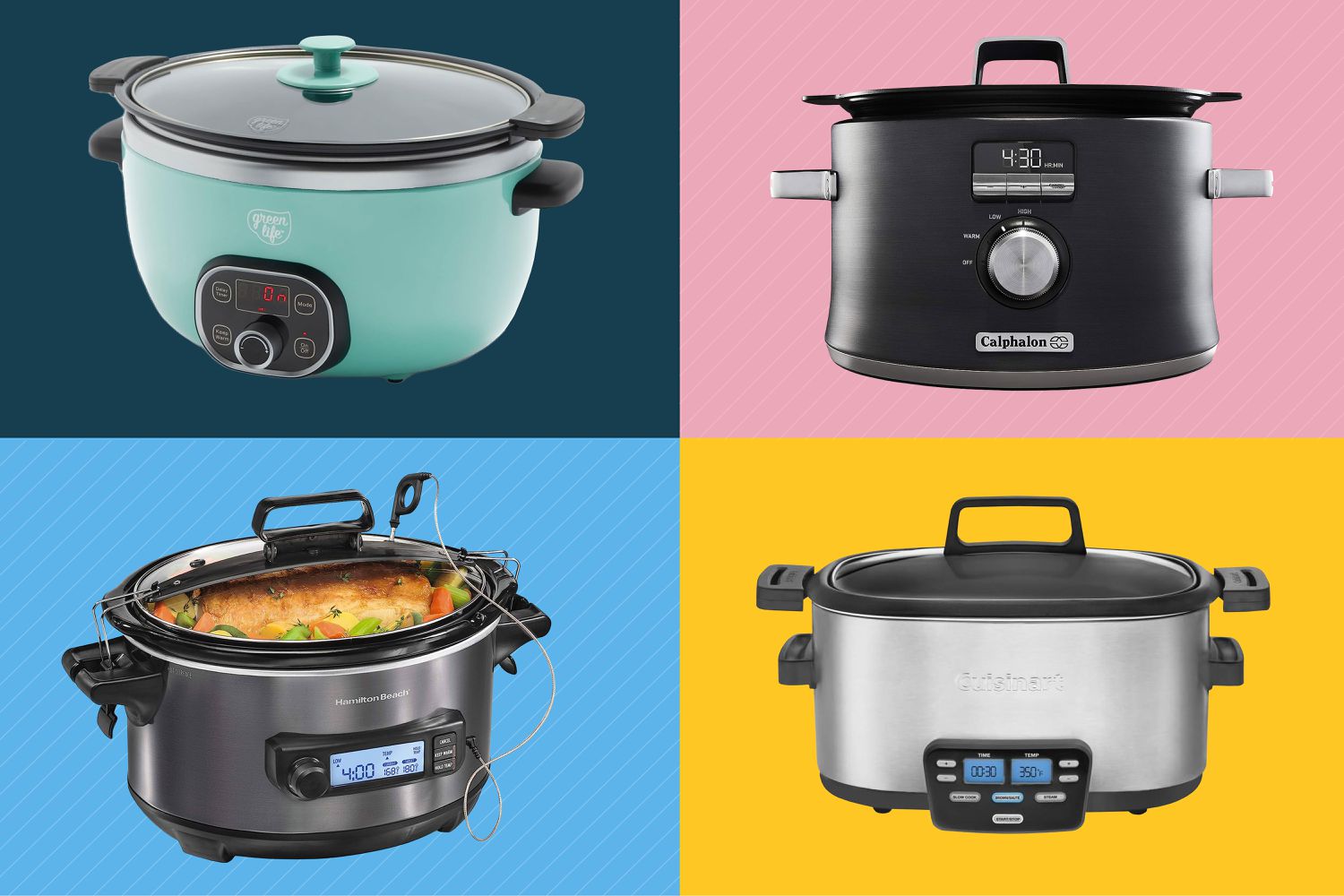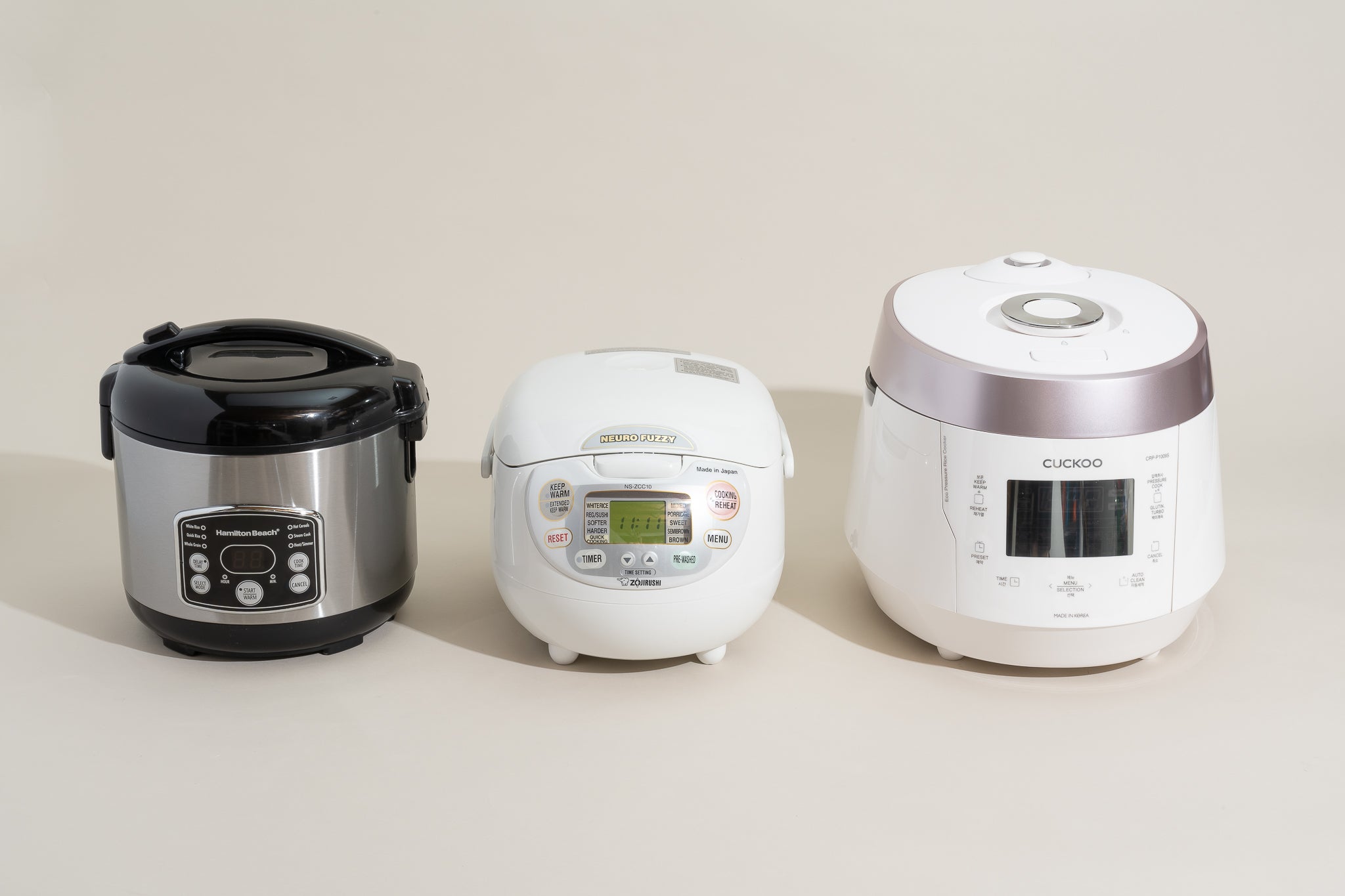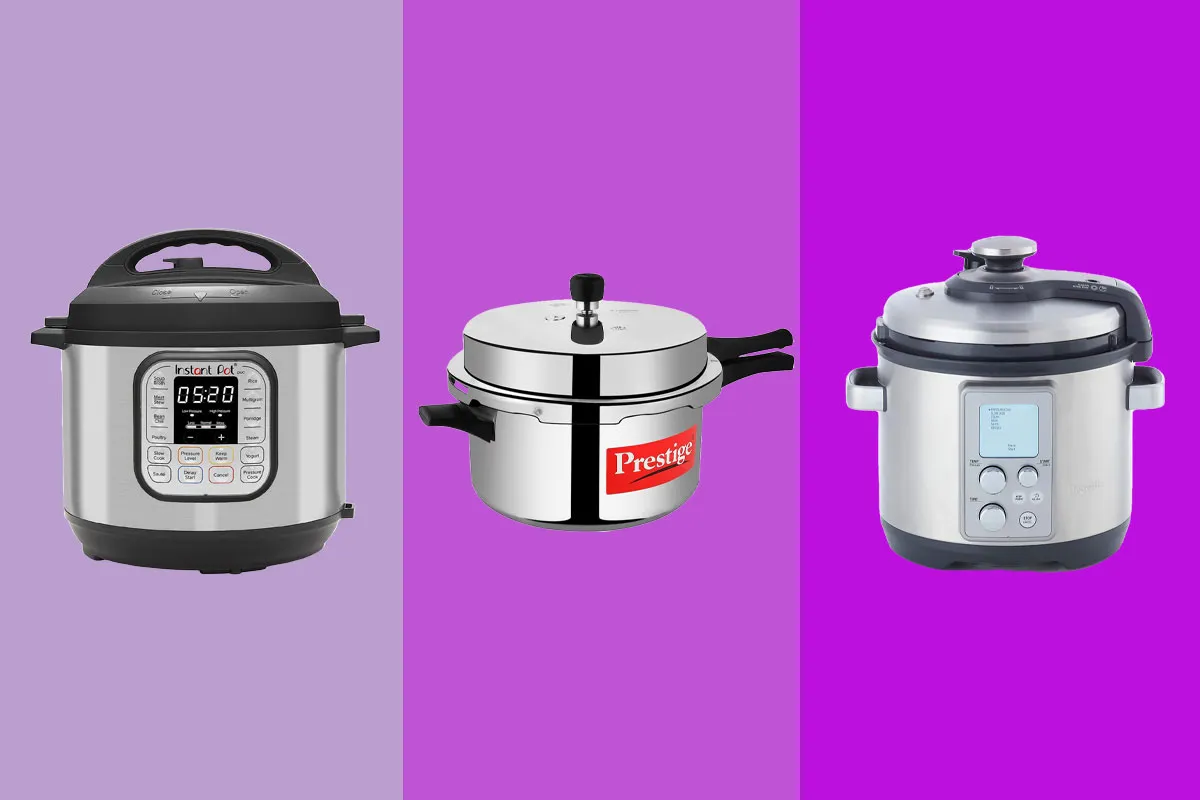Introduction
Electric pressure cookers have become increasingly popular in modern kitchens due to their convenience and ability to cook meals quickly. However, one question that often arises is how long it takes for an electric pressure cooker to release pressure. The answer depends on several factors including the cooking method used, the type of food being cooked, and the desired outcome.
Understanding the process of pressure release is essential for both new and experienced users of electric pressure cookers. It allows you to plan your cooking time effectively and ensures that your meals are cooked to perfection. In this article, we will explore the factors that affect pressure release time, discuss the different methods of pressure release, and provide insights into the time it takes to release pressure for various foods.
When it comes to electric pressure cookers, there are two primary methods of pressure release: natural release and quick release. Natural release involves allowing the pressure to decrease gradually over time, while quick release involves manually releasing the pressure using the venting mechanism. Each method has its own advantages and considerations in terms of cooking results and safety.
The time it takes to release pressure can vary depending on the specific recipe and the type of food being cooked. Delicate foods like fish or steamed vegetables may have a shorter pressure release time compared to tougher cuts of meat or starchy dishes. It’s important to follow specific recipes or guidelines to determine the appropriate pressure release time for your desired outcome.
To expedite the pressure release process, there are a few tips and tricks that can be helpful. For instance, using the quick release method for foods that are less likely to cause foam or splatter can save time. Additionally, making sure that the pressure cooker is not overfilled can also help expedite the pressure release process.
In summary, understanding how long it takes for an electric pressure cooker to release pressure is crucial for successful and efficient cooking. Factors such as the cooking method, type of food, and desired outcome all influence the pressure release time. By utilizing the appropriate method and following recommended guidelines, you can achieve optimal cooking results while saving time in the kitchen. In the following sections, we will delve deeper into the factors that affect pressure release time, explore the natural and quick release methods, discuss the time required for different foods to release pressure, and provide helpful tips for faster pressure release.
Factors Affecting Pressure Release Time
Several factors can influence the time it takes for an electric pressure cooker to release pressure. By understanding these factors, you can adjust your cooking techniques and expectations accordingly.
1. Cooking Method: The cooking method used can significantly impact the pressure release time. For example, when using the “High” pressure setting, the cooker reaches a higher internal pressure, which may result in a longer pressure release time compared to cooking on the “Low” pressure setting.
2. Food Density: The density of the food being cooked also affects pressure release time. Foods with higher density, such as large cuts of meat or root vegetables, require more time for the pressure to release. On the other hand, lighter and more delicate foods like fish or steamed vegetables may have a shorter pressure release time.
3. Initial Pressure Level: If the pressure cooker is already under high pressure before starting the pressure cooking process, it may take longer for the pressure to release compared to starting from room temperature. For example, if you’re using the pressure cooker immediately after using it for another recipe, it will take longer to release pressure than if you were starting with a cold pressure cooker.
4. Foamy or Starchy Foods: Foods that tend to foam or release starch during cooking, such as grains or legumes, can prolong the pressure release time. These foods can cause clogging in the pressure release valve, necessitating extra caution and potentially leading to a longer release time.
5. Volume of Liquid: The amount of liquid used in the recipe can impact the pressure release time. Insufficient liquid may result in a longer pressure release time as the cooker needs to release excess steam and pressure to reach the desired state.
6. Altitude: Cooking at higher altitudes can affect the pressure release time. At higher elevations, the boiling point of water decreases, which can lead to an increased cooking time and longer pressure release.
7. Ambient Temperature: The temperature of the surrounding environment can also influence the pressure release time. Cooking in colder temperatures may require additional time for the pressure to release compared to cooking in a warmer environment.
By considering these factors, you can make adjustments to your cooking process and expectations. For example, if you’re cooking a dense piece of meat, you may need to factor in extra time for pressure release. Alternatively, if you’re preparing a delicate dish, you can expect a shorter pressure release time.
Understanding the factors that affect pressure release time enables you to make informed decisions while using your electric pressure cooker. In the next sections, we will delve into the two primary methods of pressure release: natural release and quick release.
Natural Release Method
The natural release method is one of the two primary techniques used to release pressure in an electric pressure cooker. This method involves allowing the pressure inside the cooker to decrease naturally without any intervention. Here’s how it works:
1. After the cooking time is complete, turn off the heat but leave the pressure cooker sealed. The pressure inside the cooker will start to decrease gradually on its own.
2. The time it takes for natural release can vary depending on factors such as the cooking method used, the type of food being cooked, and the volume of liquid in the cooker. It can typically take anywhere from 10 to 30 minutes or more for the pressure to completely release.
3. During natural release, the pressure cooker goes into a simmering or cooling mode. The temperature inside the cooker will lower, and the pressure valve will slowly release steam.
4. It’s important to note that some recipes may require a specific natural release time for optimal results. For example, certain dishes like rice or grains may benefit from a longer natural release to prevent them from becoming mushy.
5. A key advantage of the natural release method is that it allows for additional cooking time without the risk of overcooking. It is particularly useful for recipes that require a longer cooking duration or for tenderizing tougher cuts of meat.
6. However, it’s essential to keep in mind that the natural release method may not be suitable for all recipes. Delicate foods that may continue cooking and become overcooked during the natural release, such as seafood or certain vegetables, may require an alternative pressure release method.
7. When using the natural release method, it’s crucial to exercise caution when opening the pressure cooker. Ensure that the pressure indicator has dropped, indicating that the pressure has released completely, before attempting to open the lid.
The natural release method is a valuable technique for safely and gradually reducing the pressure inside the electric pressure cooker. It allows for longer cooking durations, ideal for tenderizing meats or achieving desired textures in certain dishes. However, it’s essential to consider the specific requirements of your recipe and the characteristics of the food being cooked to determine if the natural release method is the best choice.
In the next section, we will explore the other primary method of pressure release: the quick release method.
Quick Release Method
The quick release method is another common technique used to release pressure in an electric pressure cooker. This method allows for a rapid reduction in pressure and is particularly useful when time is limited or when cooking delicate foods. Here’s how to perform a quick release:
1. Once the cooking time is complete, carefully move the pressure release valve from the sealing position to the venting position. This will allow the steam and pressure to escape quickly.
2. Be cautious when operating the pressure release valve to avoid any potential steam burns. Use a long utensil or wear oven mitts to protect your hands from the hot steam.
3. As the pressure is released, you may notice a burst of steam escaping from the pressure release valve. This is normal and part of the quick release process.
4. The quick release method takes only a few seconds to a minute to complete, depending on the pressure inside the cooker. Once the pressure has been released, the pressure indicator will drop, indicating that it is safe to open the cooker.
5. The quick release method is particularly useful for delicate foods that can quickly overcook or become mushy during natural release. Seafood, vegetables, and other tender ingredients can benefit from the rapid pressure release to preserve their texture and flavor.
6. It’s essential to follow the recipe instructions and guidelines when using the quick release method. Some recipes may specify a natural release or a combination of both natural and quick release methods to achieve the desired results.
7. After performing a quick release, be careful when opening the pressure cooker lid as there may still be residual steam. Open the lid cautiously, tilting it away from your face to avoid any potential burns.
The quick release method provides a convenient way to rapidly release pressure from the electric pressure cooker. It is especially beneficial for delicate foods that require precision in cooking time and texture. However, it is crucial to exercise caution when performing a quick release to prevent any accidents or injuries.
In the next section, we will explore the approximate time it takes to release pressure for various types of foods, providing you with helpful insights for your cooking endeavors.
Time to Release Pressure for Different Foods
The time it takes for an electric pressure cooker to release pressure can vary depending on the type of food being cooked. Understanding the approximate release times for different foods can help you plan your cooking process more effectively. Here are some general guidelines:
1. Meat: The release time for meat can vary depending on the cut and thickness. For example, a small chicken breast may take about 5 to 10 minutes to release pressure, while a large roast could take up to 20 minutes or more. It’s important to note that tougher cuts of meat may benefit from a longer natural release to ensure tenderness.
2. Vegetables: Most vegetables require a quick release to preserve their crispness and vibrant color. Generally, it takes about 1 to 2 minutes to release pressure when cooking vegetables in an electric pressure cooker.
3. Rice and Grains: Rice and grains typically require a natural release to prevent them from becoming overly soft or mushy. For white rice, the natural release time is usually around 5 to 10 minutes. Brown rice and other whole grains may require a longer natural release of 10 to 15 minutes or more.
4. Seafood: Seafood is delicate and can quickly become overcooked if not handled properly. Quick release is recommended for most seafood, taking only a few seconds to a minute to release pressure.
5. Legumes: Legumes like beans and lentils generally require a longer cooking time and a natural release to ensure they become tender. The natural release time for legumes can range from 10 to 15 minutes or more, depending on the variety and quantity being cooked.
6. Soups and Stews: The release time for soups and stews can vary depending on the ingredients used. For most recipes, a natural release of about 5 to 10 minutes is sufficient to allow the flavors to meld together.
It’s important to remember that the release times mentioned above are approximate and can vary depending on factors like the specific recipe, the size and quantity of ingredients, and the pressure cooker’s performance. Always refer to the recipe instructions for accurate pressure release times.
Additionally, certain foods may benefit from a combination of natural and quick release methods. For example, a recipe may require a natural release for a specific duration followed by a quick release to release any remaining pressure quickly.
By understanding the approximate pressure release times for different types of foods, you can better plan your cooking process and achieve the desired results. In the next section, we will provide some tips to help expedite the pressure release process, saving you time in the kitchen.
Tips for Faster Pressure Release
While the pressure release time in an electric pressure cooker is largely dependent on the cooking method and type of food, there are several tips and tricks you can use to expedite the pressure release process. These tips can save you valuable time in the kitchen and allow you to enjoy your meal sooner. Here are some helpful suggestions:
1. Quick Release for Non-Foamy Foods: When cooking foods that are not prone to foaming or splattering, such as vegetables or lean meats, you can opt for the quick release method. This will rapidly release the pressure and shorten the overall cooking time.
2. Avoid Overfilling: To promote faster pressure release, make sure not to overfill the pressure cooker. Leave enough headspace in the pot to allow for steam expansion during cooking. Overfilling can result in longer pressure release times and potentially cause safety issues.
3. Carefully Release Foamy Foods: For foods that tend to foam or release starch, such as grains or legumes, the pressure release process requires extra caution. Allow the pressure to naturally release for a few minutes before using the quick release method to prevent foam from clogging the pressure release valve.
4. Use Cold Water Release Technique: If you’re looking to cool down the pressure cooker quickly, you can use the cold water release technique. Carefully place the pressure cooker under cold running water, being mindful not to let water enter the vent. The rapid cooling will cause the pressure to release faster.
5. Partially Submerge Pressure Cooker: Another method to expedite pressure release is to partially submerge the pressure cooker in a sink or basin filled with cold water. Similar to the cold water release technique, the cool water will help to reduce the temperature inside the cooker faster, resulting in a quicker pressure release.
6. Release Steam in Intervals: Instead of performing a continuous quick release, you can release the pressure in short bursts or intervals. This technique helps prevent excessive foam or splattering and can also expedite the overall pressure release process.
7. Allow Natural Release before Quick Release: For some recipes, a combination of natural and quick release methods may be necessary. Let the pressure cooker naturally release for a set amount of time, and then perform a quick release to release any remaining pressure for faster results.
By implementing these tips for faster pressure release, you can save time in the kitchen and enjoy your meals more quickly. However, always prioritize safety and follow the instructions provided by your specific electric pressure cooker model. Now, let’s summarize the key takeaways from this article.
Conclusion
Understanding the time it takes for an electric pressure cooker to release pressure is essential for successful and efficient cooking. Factors such as the cooking method, type of food, and desired outcome all influence the pressure release time. By utilizing the appropriate method and following recommended guidelines, you can achieve optimal cooking results while saving time in the kitchen.
The natural release method, which allows the pressure to decrease gradually, is ideal for recipes that require longer cooking durations or for tenderizing tougher cuts of meat. On the other hand, the quick release method, which rapidly releases pressure, is suitable for delicate foods that can quickly overcook or become mushy.
Different types of food require varying pressure release times. Meat, vegetables, rice, grains, seafood, legumes, and soups/stews all have their own approximate release times. It’s important to refer to recipe guidelines for accurate and specific pressure release instructions.
To expedite pressure release, consider tips such as using the quick release method for non-foamy foods, avoiding overfilling the pressure cooker, carefully releasing foamy foods, using cold water or partial submersion techniques, releasing steam in intervals, and combining natural and quick release methods when necessary.
Remember, safety should always be a top priority when using an electric pressure cooker. Follow the instructions provided by your specific model, exercise caution when releasing pressure, and ensure that the pressure indicator has dropped before opening the cooker’s lid.
In conclusion, by understanding the factors influencing pressure release, utilizing the proper methods, and considering tips for faster pressure release, you can make the most of your electric pressure cooker. With a little knowledge and technique, you can confidently cook delicious meals in less time, allowing you to savor the flavors with ease and convenience. Happy cooking!







